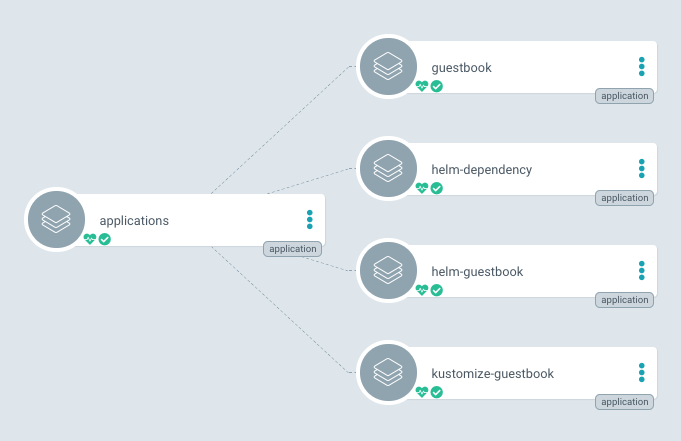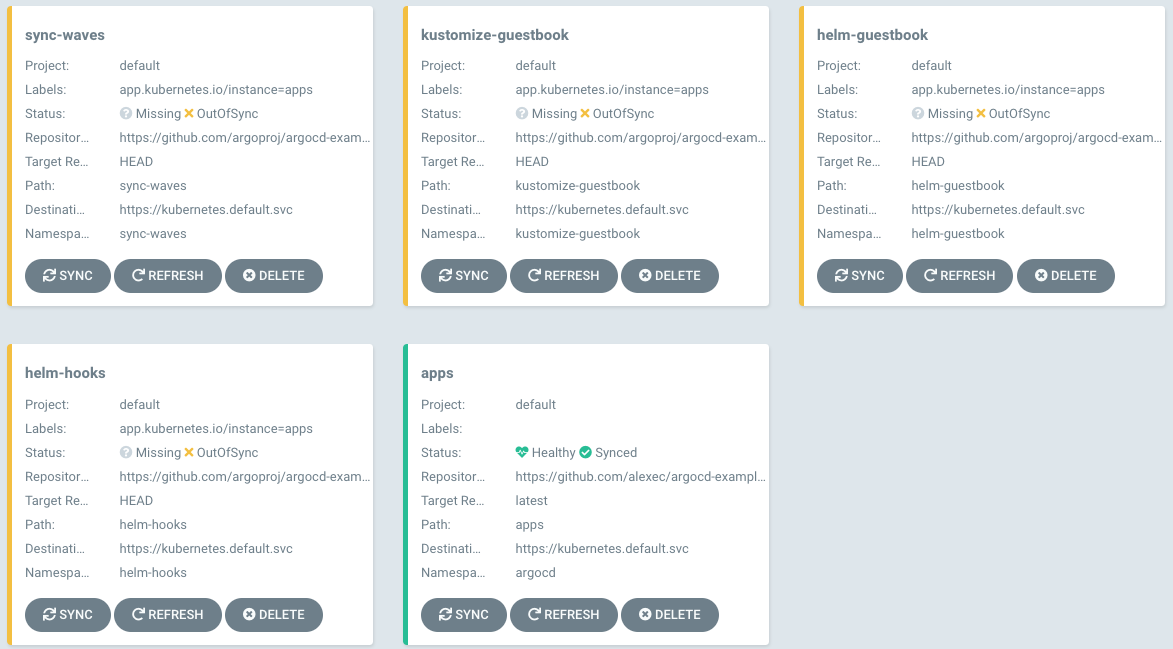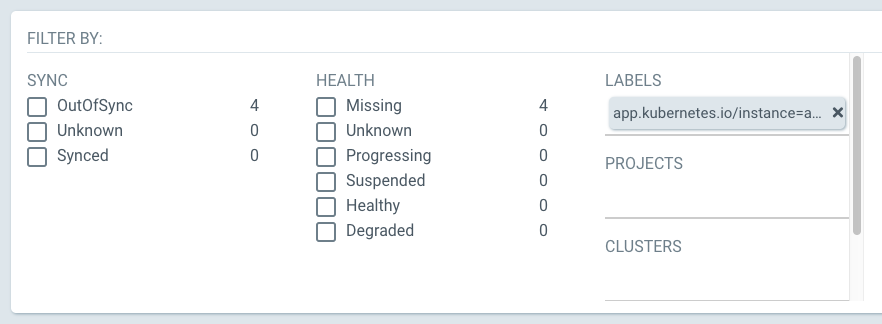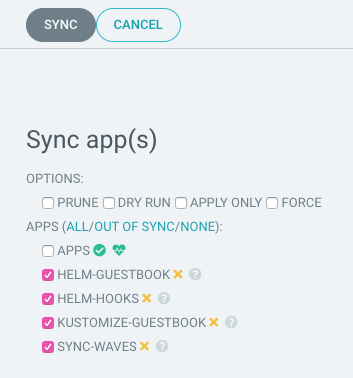github.com/argoproj/argo-cd@v1.8.7/docs/operator-manual/cluster-bootstrapping.md (about) 1 # Cluster Bootstrapping 2 3 This guide for operators who have already installed Argo CD, and have a new cluster and are looking to install many apps in that cluster. 4 5 There's no one particular pattern to solve this problem, e.g. you could write a script to create your apps, or you could even manually create them. However, users of Argo CD tend to use the **app of apps pattern**. 6 7 ## App Of Apps Pattern 8 9 [Declaratively](declarative-setup.md) specify one Argo CD app that consists only of other apps. 10 11  12 13 ### Helm Example 14 15 This example shows how to use Helm to achieve this. You can, of course, use another tool if you like. 16 17 A typical layout of your Git repository for this might be: 18 19 ``` 20 ├── Chart.yaml 21 ├── templates 22 │ ├── guestbook.yaml 23 │ ├── helm-dependency.yaml 24 │ ├── helm-guestbook.yaml 25 │ └── kustomize-guestbook.yaml 26 └── values.yaml 27 ``` 28 29 `Chart.yaml` is boiler-plate. 30 31 `templates` contains one file for each child app, roughly: 32 33 ```yaml 34 apiVersion: argoproj.io/v1alpha1 35 kind: Application 36 metadata: 37 name: guestbook 38 namespace: argocd 39 finalizers: 40 - resources-finalizer.argocd.argoproj.io 41 spec: 42 destination: 43 namespace: argocd 44 server: {{ .Values.spec.destination.server }} 45 project: default 46 source: 47 path: guestbook 48 repoURL: https://github.com/argoproj/argocd-example-apps 49 targetRevision: HEAD 50 ``` 51 52 The sync policy to automated + prune, so that child apps are automatically created, synced, and deleted when the manifest is changed, but you may wish to disable this. I've also added the finalizer, which will ensure that your apps are deleted correctly. 53 54 Fix the revision to a specific Git commit SHA to make sure that, even if the child apps repo changes, the app will only change when the parent app change that revision. Alternatively, you can set it to HEAD or a branch name. 55 56 As you probably want to override the cluster server, this is a templated values. 57 58 `values.yaml` contains the default values: 59 60 ```yaml 61 spec: 62 destination: 63 server: https://kubernetes.default.svc 64 ``` 65 66 Next, you need to create and sync your parent app, e.g. via the CLI: 67 68 ```bash 69 argocd app create apps \ 70 --dest-namespace argocd \ 71 --dest-server https://kubernetes.default.svc \ 72 --repo https://github.com/argoproj/argocd-example-apps.git \ 73 --path apps 74 argocd app sync apps 75 ``` 76 77 The parent app will appear as in-sync but the child apps will be out of sync: 78 79  80 81 You can either sync via the UI, firstly filter by the correct label: 82 83  84 85 Then select the "out of sync" apps and sync: 86 87  88 89 Or, via the CLI: 90 91 ```bash 92 argocd app sync -l app.kubernetes.io/instance=apps 93 ``` 94 95 View [the example on Github](https://github.com/argoproj/argocd-example-apps/tree/master/apps).